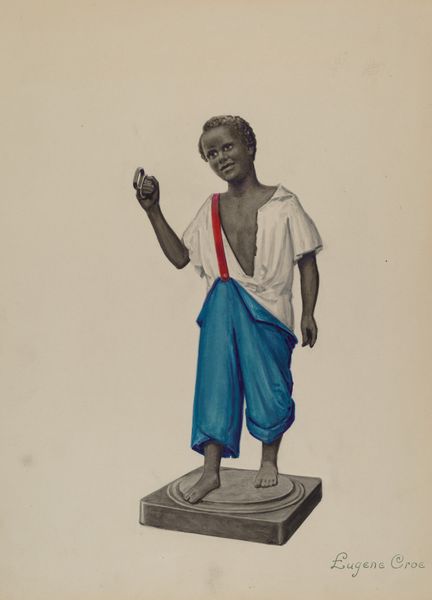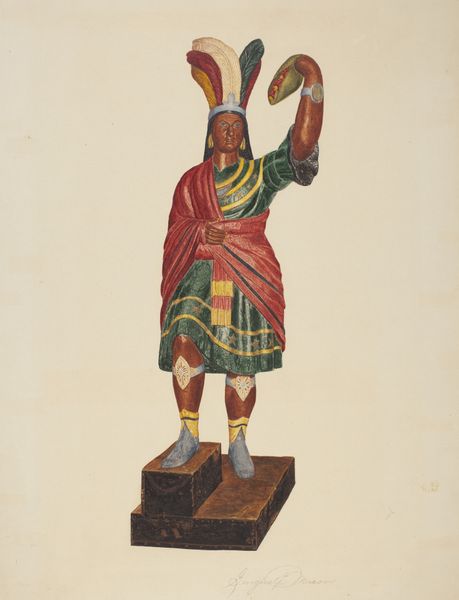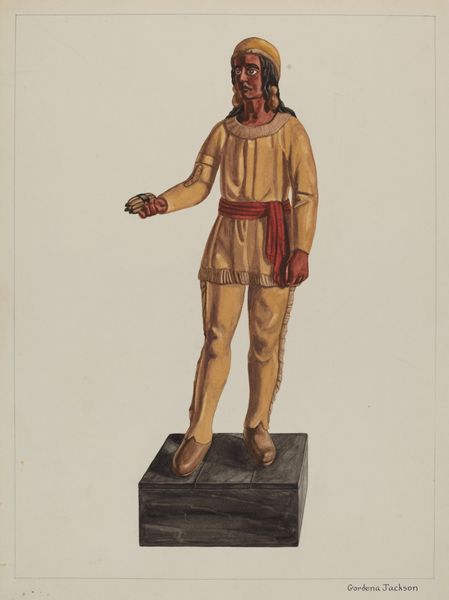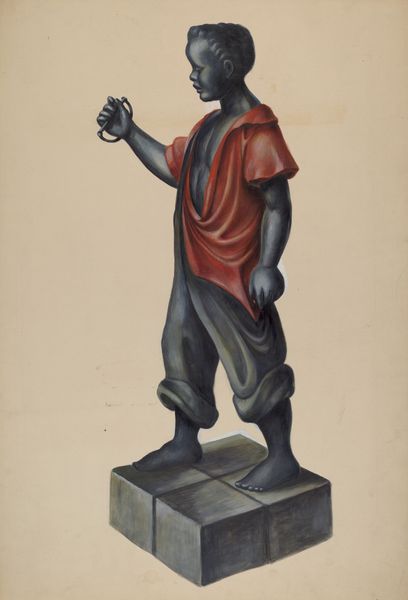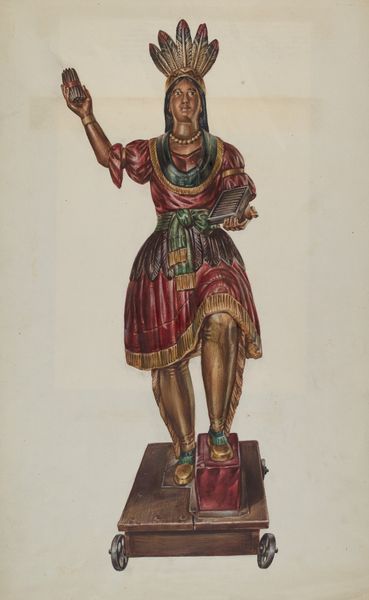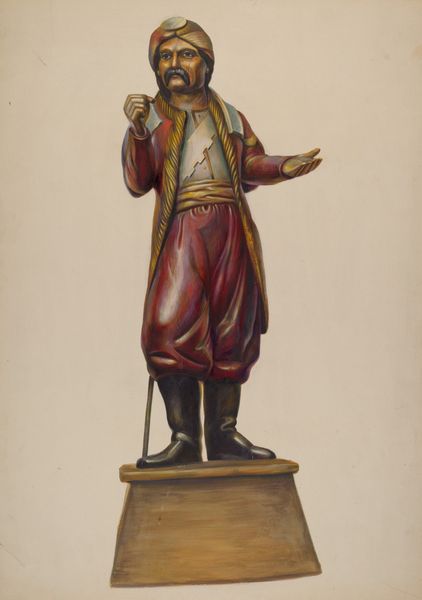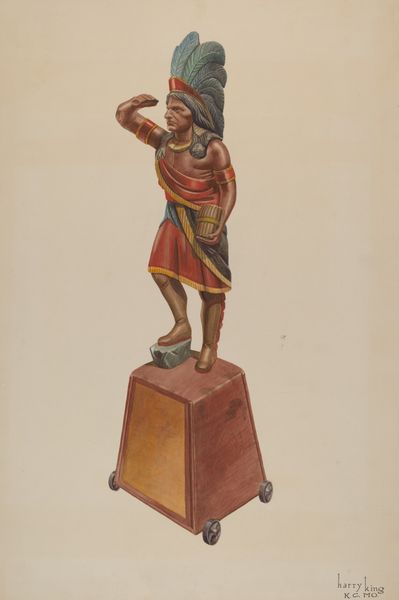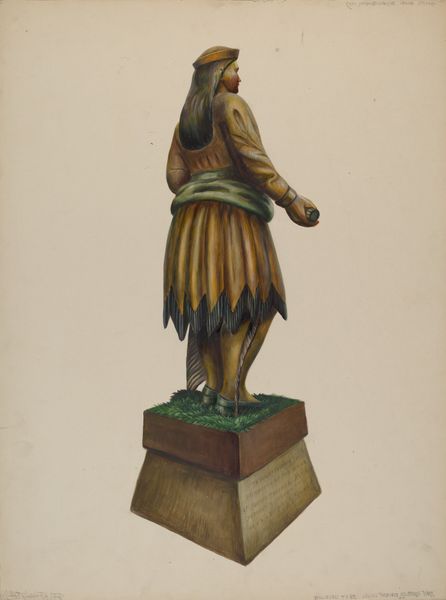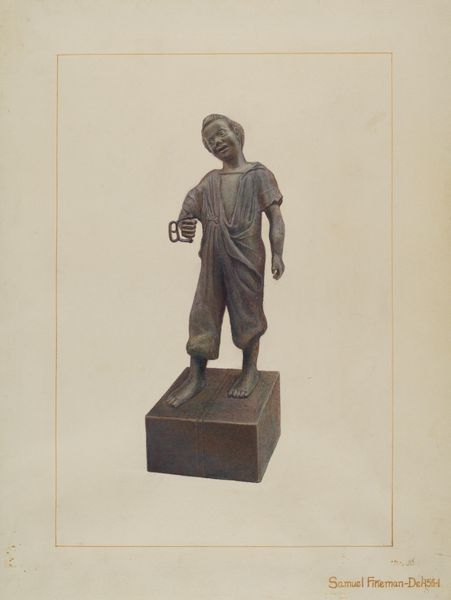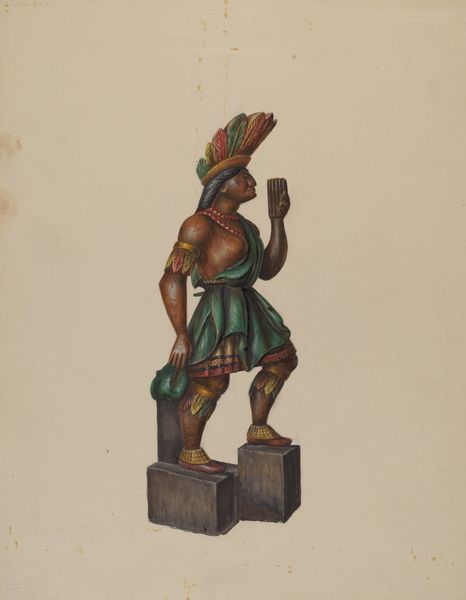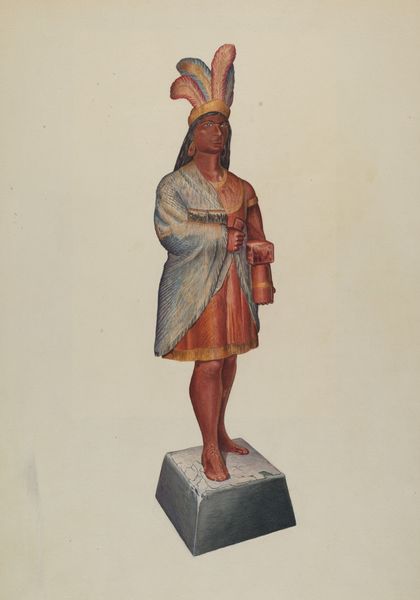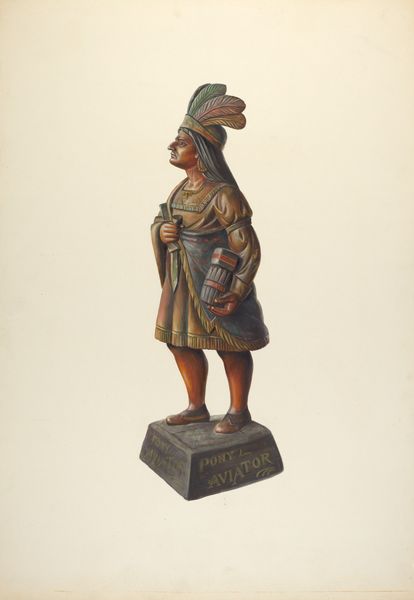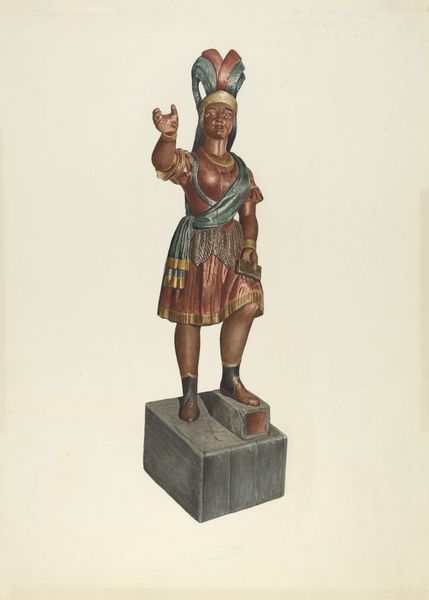
drawing, graphite
#
drawing
#
charcoal drawing
#
figuration
#
graphite
#
watercolour illustration
#
graphite
#
realism
Dimensions: overall: 35.6 x 26.7 cm (14 x 10 1/2 in.)
Copyright: National Gallery of Art: CC0 1.0
Editor: Here we have David P. Willoughby’s “Hitching Post,” a graphite and watercolor drawing created between 1935 and 1942. I’m immediately struck by how lifelike the figure seems, yet the subject matter…feels loaded, given its title. What stands out to you in this work? Curator: What intrigues me is the artistic labor embedded within it. Notice the intense detail in the graphite work. The material reality of producing an image like this, in that era, speaks to a specific economy of artistic production. What sort of patronage enabled this, and for what market? Editor: That's a really interesting perspective. I was focusing more on the figure itself and its implications, but the economic aspect you raise makes me consider the role this image might have played. Were these kinds of depictions common? Curator: Depictions of this type certainly existed. Consider their presence within mass-produced objects - postcards, figurines, advertisements. Investigating the consumption of these images is crucial. Where would a drawing like this circulate? Who would own it, and why? Its material existence as a drawing makes it unique, pulling it slightly away from mass consumption and perhaps towards a different kind of engagement. What kind of statement do you think Willoughby was trying to make? Editor: I hadn't really considered the level of consumption involved, I was mainly thinking of its relation to racial representation, but thinking about mass production and where it lands shifts the conversation. I still feel uneasy, but it does give a framework to consider the original intentions. Curator: Precisely. By centering the discussion on materiality, production, and potential markets, we move beyond subjective reactions and into a critical engagement with the work’s complex social history. Editor: Thanks, it certainly makes the piece more nuanced when understanding its cultural roots and materials. I appreciate the deeper understanding of it now.
Comments
No comments
Be the first to comment and join the conversation on the ultimate creative platform.
